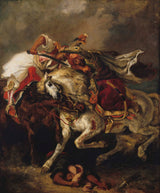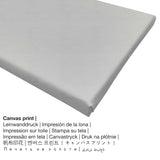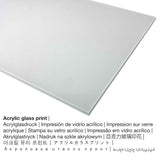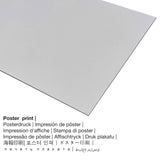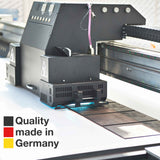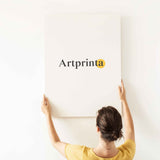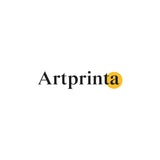Eugène Delacroix, 1835 - Le combat du Giaour et du Pacha - tirage d'art
TTC Expédition calculée à la caisse.
L'offre de produits
C'est plus que 180 chef-d'œuvre de plusieurs années a été peint par le mâle peintre Eugène Delacroix. The original has the following size: Height: 73 cm, Width: 61 cm. Oil painting was used by the French artist as the medium of the artwork. The original masterpiece has the following text as inscrption: Date and signature - Signed and dated lower right: "Eug 1835 Delacroix.". De nos jours, l'œuvre d'art appartient à la collection d'art numérique de Petit Palais - Musée des Beaux-arts de la Ville de Paris, qui est un musée d'art dans le 8e arrondissement. le l'art moderne œuvre d'art, qui fait partie de la domaine public est inclus avec l'aimable autorisation de Petit Palais ParisLa limite de crédit de l'œuvre est la suivante:. En plus de cela, l'alignement est portrait avec un rapport d'image de 1: 1.2, ce qui implique que la longueur est 20% plus courte que la largeur. The painter Eugène Delacroix was an artist, whose art style can be classified as Romanticism. The European artist was born in the year 1798 à Saint-Maurice, Val-de-Marne et est décédé à l'âge de 65 en 1863 à Paris.
Quel serait votre matériau d'impression artistique préféré?
Pour chaque impression d'art, nous proposons différents matériaux et tailles. Choisissez parmi les options de produits suivantes maintenant en fonction de vos préférences en matière de taille et de matériau:
- Impression sur verre acrylique: The acrylic glass print, often described as a fine art print on plexiglass, makes the original into lovely décor. Further, the acrylic art print makes a good alternative option to canvas or aluminium dibond art prints. Your favorite work of art will be manufactured with the help of modern UV printing technology. The major upside of an acrylic glass art print is that contrasts plus smaller image details will be recognizeable due to the precise tonal gradation.
- Impression dibond en aluminium: An Aluminium Dibond print is a material with a true depth. The bright & white parts of the work of art shimmer with a silk gloss, however without glow. Colors are luminous in the highest definition, fine details are crisp, and there’s a matte appearance that you can literally feel.
- Impression d'affiche (matériau en toile): Our poster print is a UV printed canvas paper with a fine surface finish. Please bear in mind, that depending on the absolute size of the canvas poster print we add a white margin 2-6cm around the print, which facilitates the framing.
- Impression sur toile: The printed canvas material mounted on a wood stretcher frame. Hanging a canvas print: A canvas print has the great advantage of being relatively low in weight, which implies that it is easy and straightforward to hang up the Canvas print without additional wall-mounts. A canvas print is suited for all types of walls.
Legal note: We do our best in order to describe our products as exact as we can and to display them visually in our shop. Still, the pigments of the printing material and the imprint can diverge somehwat from the representation on the device's screen. Depending on your settings of your screen and the nature of the surface, colors may not be printed as exactly as the digital version on this website. In view of the fact that all art reproductions are printed and processed manually, there might as well be minor differences in the exact position and the size of the motif.
Informations sur les articles structurés
| Classification de l'article: | tirage d'art |
| La reproduction: | reproduction numérique |
| Technique de production: | Impression directe UV (impression numérique) |
| Provenance: | Production allemande |
| Type de stock: | production à la demande |
| Utilisation prévue du produit: | conception de la maison, galerie murale |
| Orientation: | alignement portrait |
| Rapport d'image: | 1: 1.2 |
| Interprétation du rapport d'image: | la longueur est 20% plus courte que la largeur |
| Tissus disponibles: | impression en métal (aluminium dibond), impression sur verre acrylique (avec revêtement en verre véritable), impression d'affiche (papier de toile), impression sur toile |
| Options de taille d'impression sur toile (toile sur châssis de civière): | 50x60cm - 20x24 ", 100x120cm - 39x47", 150x180cm - 59x71 " |
| Impression sur verre acrylique (avec revêtement en verre véritable) | 50x60cm - 20x24 ", 100x120cm - 39x47", 150x180cm - 59x71 " |
| Options d'impression d'affiche (papier de toile): | 50 x 60 cm - 20 x 24 ", 100 x 120 cm - 39 x 47" |
| Impression sur aluminium (matériau dibond en aluminium): | 50 x 60 cm - 20 x 24 ", 100 x 120 cm - 39 x 47" |
| Cadre photo: | Sans cadre |
Détails des illustrations structurées
| Titre de l'œuvre d'art: | "The Combat of the Giaour and the Pasha" |
| Classement de l'oeuvre: | peinture |
| Terme général: | l'art moderne |
| Période: | 19th siècle |
| Année de création: | 1835 |
| Âge de l'oeuvre: | âgé de plus de 180 ans |
| Support original de l'oeuvre: | Peinture à l'huile |
| Taille originale (illustration): | Hauteur: 73 cm, Largeur: 61 cm |
| Signature sur l'oeuvre: | Date and signature - Signed and dated lower right: "Eug 1835 Delacroix." |
| Musée / emplacement: | Petit Palais - Musée des Beaux-arts de la Ville de Paris |
| Lieu du musée: | Paris, France |
| Site Internet du musée: | Petit Palais - Musée des Beaux-arts de la Ville de Paris |
| Licence d'oeuvre d'art: | domaine public |
| Avec l'aimable autorisation de: | Petit Palais Paris |
Informations sur l'artiste
| Nom d'artiste: | Eugène Delacroix |
| Genre: | mâle |
| Nationalité de l'artiste: | Français |
| Les professions: | peintre |
| Pays de l'artiste: | France |
| Classification: | artiste moderne |
| Styles d'art: | le romantisme |
| Âge au décès: | 65 ans |
| Année de naissance: | 1798 |
| Ville d'origine: | Saint-Maurice, Val-de-Marne |
| Décédés: | 1863 |
| Décédé à (lieu): | Paris |
Ce texte est propriété intellectuelle et protégé par copyright ©, Artprinta.com
Original artwork information from Petit Palais - Musée des Beaux-arts de la Ville de Paris website (© Copyright - Petit Palais - Musée des Beaux-arts de la Ville de Paris - Petit Palais - Musée des Beaux-arts de la Ville de Paris)
Inspired by oriental Lord Byron poem, the painting represents the decisive battle between the Giaour, mounted on a black horse, and Hassan Pasha, on his white horse. The Giaour, standing over his saddle, hard with a wild smile cloth covering the chest of the Pasha to reach the heart with acute blade of his sword. The pasha, precariously balanced on his horse, holding in his right hand a dagger, trying to push her attacker on the other hand. The ferocity of the struggle is also expressed in the attitude of the horse, the black horse biting the chest white horse, already wounded in the thigh. The latter seems to be reluctant to walk on the dead body of a Muslim lying on the ground. For Delacroix, the subject is mostly an excuse to portray a melee of great intensity, where humans and animals are closely associated.
Figure guardian of Romanticism, Delacroix was introduced to the East by reading Byron works. He discovers the realities during a trip to Morocco in 1832. His style of painting is deeply marked by the experience. This painting was inspired by a passage from Byron oriental tales published in 1814 under the title "The Giaour, a fragment of a turkish tale". The story chronicles the thwarted loves of a Venetian, the Giaour (term for an infidel to Muslims) and a slave, Leila, belonging to the harem of Hassan, military chief of a Turkish province. Leila, who missed the loyalty she had the Pasha Hassan was thrown into the sea. Her lover, the Giaour, the revenge by killing Hassan.
Hassan Pasha (literary character); The Giaour (literary character)
Scene, Single combat, Knight, Pasha, Turkish, Turban, Horse, Saber, Dead, Orientalism

